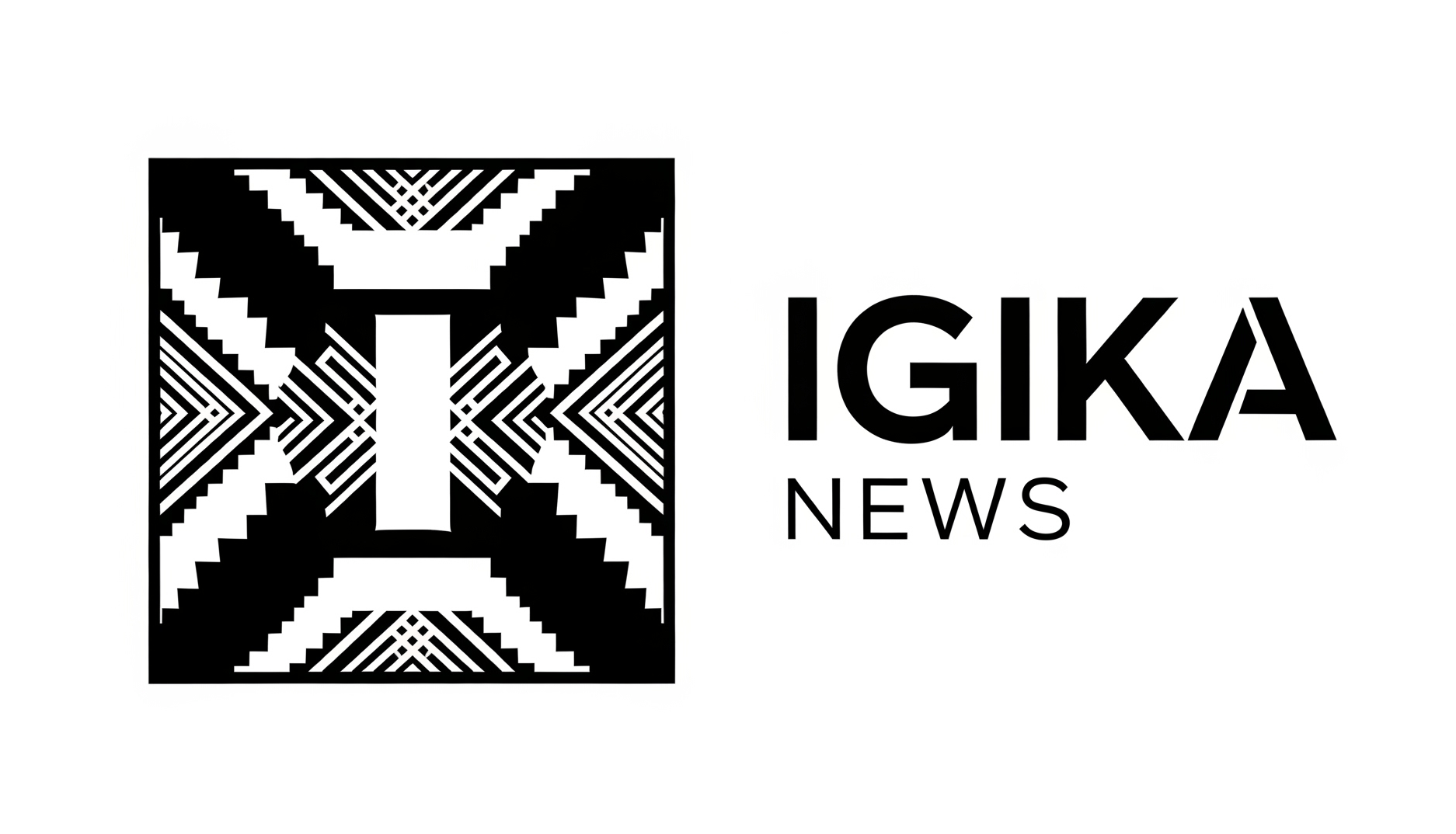Your company’s website is like its main branch office: it’s always open and can be accessed from anywhere in the world. Now, think of your web host as the land, the building, the power supply, and the security for that office. Would you pick the cheapest, least reliable piece of land for your main store? No, of course not. The same logic applies to your online presence, but ten times more so.
Performance: Your Site’s Speed Is the Same as Your Business’s Speed
People’s attention spans are shorter than ever in 2025. A website that takes a long time to load isn’t just annoying; it stops people from buying things. Studies show that even a one-second delay in page load time can cause a big drop in page views, customer satisfaction, and conversions. Google also takes site speed into account when ranking sites in search results, so a slow site will hurt your visibility.
How your web host affects this:
- Server Hardware: SSDs (Solid State Drives) are much faster than HDDs (Hard Disk Drives). SSDs with NVMe technology are even faster. A good web host buys the latest hardware.
- Location of the server: The distance between your server and your audience is important. A data center that is closer to your target market will have less latency. If you’re a business in Kigali that wants to reach the East African market, a provider with servers in Europe or, even better, the Middle East can give you better service than one that only has servers in North America.
- Bandwidth and Resources: Your site can handle traffic spikes without crashing if it has enough bandwidth and a dedicated (or properly allocated) CPU and RAM. Your web host needs to give you enough resources.
- Network Infrastructure: Faster data transfer is made possible by high-quality network connections, strong routing, and peering agreements with major internet service providers (ISPs).
Security: Protecting Your Digital Assets and Your Customers’ Trust
Cybersecurity threats are always there, and they keep getting worse. Your company’s website is a prime target for ransomware, DDoS attacks, data breaches, and malware injections. The main thing that protects you is your web host.
Your host must offer these important security features:
- Free SSL Certificates: They encrypt the data that goes back and forth between your site and visitors, which is very important for e-commerce and trust. This is free from a lot of good web hosts.
- DDoS Protection: Tools that help protect your site from distributed denial-of-service attacks that send too much traffic to it.
- Web Application Firewall (WAF): Blocks and filters bad traffic before it gets to your application.
- Regular Backups: Backups that are done automatically and off-site are a must. What will you do if your site gets hacked or goes down? Your ability to get things back to normal quickly is very important. This is easy with a good web host.
Malware scanning and removal: finding and getting rid of harmful code before it can do any damage.
Server Hardening: Strong security settings on the server level.
Rwandan businesses are handling more sensitive customer data and online transactions as the internet becomes more widely used (now at 38% as of mid-2025, according to ITU data cited by Daba Finance). This makes the need for strong security even more important.
Scalability: Making Sure Your Growth Will Last
Your business isn’t static, and neither should your web hosting be. What works for you today might not work at all tomorrow. A web host that offers seamless scalability makes sure that your website can grow with your business without having to move it to a new server, which can be expensive and time-consuming.
Things to think about when it comes to scalability:
- Easy Upgrades: Is it easy to switch from shared hosting to VPS or VPS to a dedicated server or cloud instance with little downtime?
- Elastic Resources: Can you quickly add more CPU, RAM, or storage when traffic spikes (this is especially important for cloud hosting)?
- Flexible Pricing: Does the host have plans that let you pay for resources as you use them instead of being stuck with fixed, possibly too-high packages?
Dependability and Uptime: Always Open for Business
When your site is down, you lose money and leads and damage your brand’s reputation. One important measure is your host’s uptime guarantee. Find providers that guarantee 99.9% uptime or more.
Things that affect reliability:
Redundant infrastructure means having more than one server and network path so that if one fails, another can take over without any problems.
Proactive Monitoring: Systems that find and fix problems before they cause downtime.
Data Center Quality: The web host’s facilities are rated on a scale of Tier III to Tier IV, with Tier III being the most redundant and fault-tolerant.
Help: Your Lifeline in the Digital Seas
Even the best technology doesn’t always work. When that happens, quick, helpful support is very important. This is where a lot of businesses go wrong: they put price ahead of good customer service.
What to expect from support:
Available 24/7/365: Problems don’t care about business hours. A good web host is always available to help.
Multiple ways to get in touch: live chat, phone, and email/ticket system.
Staff that is knowledgeable and responsive: Can they fix complicated technical problems instead of just reading from a script?
Dedicated Account Manager: Having one person to talk to for bigger plans can be a big help.
The Important Job of a Web Designer in Choosing a Web Host
Slug: the web designer’s job is to help you choose a web host
People often think that web hosting is only an IT decision. But this is a big mistake. Your web designer, whether they work for you, an agency, or as a freelancer, knows exactly what your website needs, how it needs to work, and how it interacts with the hosting environment. Not including them in this conversation is like making a car without asking the engineers who made the engine for their advice.
Turning Design into Performance
A web designer knows how to balance good looks with good performance. They know that page load times are affected by image sizes, video embeds, custom fonts, complicated animations, and interactive elements.
- Optimizing Assets: They can help you with server-side image optimization, fast delivery of CSS and JavaScript, and the benefits of using a CDN (Content Delivery Network). These are features that some web hosts support or improve.
- Framework and CMS Compatibility: Your web designer knows the exact server requirements (PHP versions, database types, memory limits) that will make your site work best if it is built on WordPress, Joomla, or a custom framework. A web host that works well with your CMS (like managed WordPress hosting) will make your site run much better and make it easier for developers to work on.
- Interactive Elements: Websites that are rich and dynamic often need more server resources. A web designer can explain these needs to make sure the web host can meet them.
- Tip for Businesses: Get your web designer involved early in the process of choosing a host. Ask them specific questions about the best hosting environment for your website’s current and future state. Their ideas are very helpful.
Setting up environments and workflows for development
Web designers who work for a living work in controlled settings. They don’t change your live website directly. A good web host gives you:
Staging environments are copies of your live site that the web designer can use to test updates, new features, or design changes without affecting your live site.
Version Control Integration (Git): For more complicated projects, easy integration with Git repositories makes development and deployment easier.
SSH Access: For more advanced customization and managing from the command line.
These features are very important for fast development cycles, lowering the chance of mistakes, and making sure that the transition from development to live goes smoothly. Your web designer will strongly recommend a web host that offers these tools.
Fixing and Debugging
Your web designer is usually the first person to respond when something goes wrong, like a plugin conflict, a database error, or a broken script. For quick problem solving, it’s important for the web host to give you access to server error logs, debugging tools, and a technical support team that is always available. A web designer who often has to deal with slow or unhelpful hosting support will quickly start to support a provider that puts their needs first.
Companies should ask potential web hosts how easy it is to access error logs and what common debugging tools they support. A good web designer can quickly figure out how easy it is to use the host’s control panel and support channels.
Breaking Down Your Company’s Needs: The Strategic Assessment
Slug: breaking down the needs of a company for a strategic assessment
You need to know exactly what your business needs before you even think about web hosting. This is where you need to think strategically.
1. Set goals and a purpose for your website
What do you want your website to do?
Site for informational brochures: low traffic, static content, and basic needs.
Blog/Content Hub: moderate traffic, regular updates to content, and a need for a database that works well.
E-commerce Store: Lots of visitors, safe payments, a strong database, fast and scalable, and PCI compliance.
SaaS Application/Web App: Needs a lot of resources, can be set up in many ways, has a strong database and developer tools, and uptime is very important.
Portfolio/Lead Generation: moderate traffic, focus on forms and visual content.
Internal Company Portal: Security, managing users, and possibly a lot of people using it at the same time.
Tip: Include important people from marketing, sales, IT, and even customer service in this conversation. Their points of view will help define the real needs.
2. Estimate Your Current and Future Traffic and Resource Needs
Be honest about how much traffic you have right now, but also hopeful about how much it will grow.
Current Metrics: Use Google Analytics or the stats from your current host to find out how many visitors, page views, and peak traffic times you get each day and month.
Are you starting a big marketing campaign? Growth Projections: Going into new markets? Wanting viral content? Make plans for spikes.
Content Volume: How much space do you need to store videos, images, documents, and database records?
Database Activity: Does your site rely a lot on a database, like for e-commerce or user-generated content? This changes how much CPU and RAM your web host needs.
Tip: Don’t just plan for next month; plan for the next one to three years. It’s easier and less disruptive to grow with a good web host than to move later.
3. Think about your budget (in a realistic way)
Cost shouldn’t be the only thing you think about, but it is a big one. But keep in mind that the cheapest option isn’t always the best. If you choose the wrong host, you could lose sales, hurt your reputation, and have to pay a lot for technical fixes.
Initial vs. Renewal Costs: Be careful of first-term prices that are very low but go up a lot when you renew.
Hidden Fees: Make sure there are no extra charges for backups, SSL, domain privacy, or advanced support.
Compare what you get for the price in terms of features, performance, support, and guarantees to see if it’s worth the money.
A good tip is to figure out the real annual cost over two to three years, including renewal rates and any necessary extras.
4. Check how skilled your team is with technology.
Who will be in charge of the hosting?
Non-technical Team/Small Business: You need a web host with an easy-to-use control panel (like cPanel or hPanel), great support around the clock, and, if possible, managed services (like Managed WordPress hosting or Managed VPS).
Your internal IT or development team might want root access, SSH, certain operating systems (like Linux or Windows), and developer tools. They might also be okay with unmanaged VPS or dedicated servers.
External Web Designer/Developer: They usually have preferences based on how they work and what they’ve done in the past.
If your team doesn’t have the technical know-how, don’t choose an unmanaged solution, no matter how much money you think you’ll save. The headaches and possible downtime will be much worse than any savings at first.
Different Types of Hosting for Businesses: Finding the Right Fit for Your Goals
Slug: types -hosting-companies-solutions-ambitions
How Should Your Company Select a Web Hosting Provider? needs to know about the different types of hosting environments. Each type has a different mix of performance, control, and cost.
1. Shared Hosting: The First Step for Startups
Best for: New businesses, small businesses with brochure sites, personal blogs, or informational websites with few visitors.
Pros: It’s the cheapest and easiest to use and often comes with a free domain and email.
Cons: Resources are shared (can be affected by “noisy neighbors”), you have limited control, and it’s not good for high traffic or sensitive data.
Company Context: This is a good way to test the waters or make a very simple online presence. Not able to grow beyond a certain point. This will make things harder for your web designer if your site is complicated.
2. The answer to growing pains is VPS (Virtual Private Server) hosting.
Best for businesses that are growing, online stores, blogs with a lot of traffic, developers who need more control, or businesses that need certain software environments.
Pros: dedicated resources (more reliable performance), root access for customization, scalable, and more secure than shared.
Cons: It’s more expensive than shared and needs more technical know-how (unless it’s managed).
Company Context: A great way to get around the limits of shared hosting. For a lot of Rwandan businesses that want to grow their online operations, this is the sweet spot because it offers a good mix of performance and control. Your web designer will like having more tools and options.
3. Dedicated Hosting: The Most Powerful Option
Best for big companies, e-commerce sites with a lot of traffic, complicated web apps, media streaming sites, or businesses that have to follow strict security and compliance rules.
Pros: You have full control, maximum performance, and security; all server resources are yours alone.
Cons: It’s the most expensive option and requires a lot of technical knowledge to run (or a managed dedicated service).
If your company’s online operations are very important and bring in a lot of traffic, you might need a dedicated web host. You need a strong internal IT team or a fully managed solution for this.
4. Cloud Hosting: The Future That Is Flexible and Strong
Best for: e-commerce, SaaS apps, websites with a lot of traffic, agencies that manage more than one client site, or any business that needs the most uptime and flexibility.
Pros: Unmatched scalability (pay-as-you-go), high reliability (distributes workload across multiple servers), global reach, and perfect for traffic that changes.
Cons: It can be harder to manage than shared (though managed cloud solutions make this easier), and prices can change more.
Company Context: More and more, this is the best choice for businesses that need to be flexible. The ability to quickly add or remove resources is a big plus, especially for businesses that run seasonal campaigns or are growing quickly. A web host that offers strong cloud solutions gives you a solid base for the future.
- H2: Managed WordPress Hosting: The Best for the Most Popular CMS
Best For: Any business that uses WordPress to run their website, whether it’s a small business or a big publisher.
Pros: A server environment that is specifically designed to improve WordPress performance, better security for WordPress, automatic updates, backups, and staging environments, and expert support for WordPress. Lowers the workload for both your internal team and your web designer.
Cons: Usually costs more than generic hosting and isn’t as flexible for apps that aren’t WordPress.
Company Context: This is usually the best option if you use WordPress. It lets your team and your web designer focus on content and strategy instead of managing servers.
Important Things to Think About When Choosing a Web Host for Your Business
Slug: important things to think about when choosing a web host for your business
When you ask, “How Should Your Company Choose a Web Hosting Provider?” Go beyond the types of hosting and look at these specific things.
1. Location of the data center: proximity is important
The speed of your site for your target audience depends on where your web host’s data center is located.
For businesses in Rwanda, global reach is often more important than local data centers. A host with data centers in Europe, South Africa, or the Middle East can cut down on latency for users in Africa by a lot.
CDN (Content Delivery Network): A CDN (like Cloudflare, which many web hosts use) stores your site’s static content (images, CSS, and JS) on servers all over the world and sends it to the user from the server that is closest to them. This is a must-have for people all over the world.
A good tip is to ask potential web hosts where their data centers are and if they include or work with a CDN. A CDN is something that your web designer will often suggest to improve performance.
2. Compatibility and Technology Stack
Make sure that the web host can handle the technologies that your website uses or plans to use.- Linux (the most common OS that supports PHP, MySQL, and WordPress) or Windows (.NET, MS SQL Server).
- PHP, Python, Node.js, Ruby, Java, and other programming languages.
- MySQL, PostgreSQL, and MSSQL are some examples of databases.
- You can use cPanel, Plesk, or a custom panel as your control panel. Make sure your team and web designer find it easy to use.
Helpful Hint: Ask your web designer or development team to double-check the exact software versions and dependencies your app needs.
3. Security Features: A Must-Have Priority
I’m saying it again because it’s so important. Your web host should give you:- Backups and restores that happen automatically every day, off-site, and are easy to do.
- SSL/TLS certificates are important for both security and SEO. Most good web hosts give you free Let’s Encrypt SSL.
- Firewalls (both hardware and software) keep people from getting into your system without permission.
- Malware scanning and removal: a way to protect yourself.
- DDoS protection is a must for big companies.
- Security audits and compliance certifications are very important for e-commerce (PCI DSS) and healthcare (HIPAA).
Tip: Don’t just ask if they have these features; ask how they work. How do they handle security breaches? How quickly are flaws fixed?
4. Plan for growth by thinking about scalability and upgrade paths.
Your web host should make it easy to grow, not hard.
Seamless Upgrades: Switching plans should be easy and not take up too much time.
Resource Monitoring: Tools that let you see how much you’re using so you can plan for upgrades.
Consultative Support: Can their support staff tell you when and how to scale?
Tip: Ask how to upgrade your plans. Some web hosts let you upgrade right away from your control panel, while others make you move things over by hand.
5. Customer service: the human touch
This is often what makes a web host great instead of just good.
Response Times: What are their promised response times for different levels of severity?
Do they have experts who know how to work with your CMS (like WordPress)? Can they help with more than just server problems?
Ways to contact us: phone, chat, email, and a ticketing system. Try them out before you buy.
Tip: Before you sign up, try out their live chat support by asking them some technical questions. Pay attention to how long it takes them to respond and how good their answers are.
6. Reputation and Reviews: Social Proof Is Important
What do current customers think of the web host?
Check out independent review sites like Trustpilot, G2, and HostingAdvice.com.
Look for case studies, especially from businesses that are like yours.
Forums for the community: Look for conversations about the web host in tech communities that are relevant.
Tip: Look at reviews from the last 6 to 12 months because the quality of hosting can change quickly. Check for patterns in feedback about uptime, support, and fees that aren’t obvious.

7. Read the fine print about prices and guarantees.
Renewal Rates: Always make sure you know the renewal price, which is usually much higher than the first offer.
Guarantee of Money Back: You can try the service without risk for 30 days (or longer) and get your money back.
Uptime Guarantee: Know what you will get if your service goes down (if anything).
Set a reminder in your calendar for your renewal date well in advance so you can either renegotiate or plan a migration if you need to.
The Best Web Hosts for Your Business in 2025
Slug: best web hosts for businesses in 2025
Here are some of the best web hosts based on how well they work now, how reliable they are, and how useful their features are for businesses in 2025 (and with a nod to what a modern web designer needs):
- SiteGround: Great Performance for WordPress and More
SiteGround always ranks high because they have a great Google Cloud infrastructure, fast speeds, and proactive security. They are a great choice for businesses that use WordPress.
Why for Businesses: Great uptime, strong security, developer-friendly tools (like staging and Git), and legendary 24/7 expert support that knows how to fix complicated website problems. Their Site Tools control panel is easy to use for people who know a lot about computers and people who don’t.
From a web designer’s point of view, it’s a great place to build and keep up WordPress sites. Version control, staging, and SSH are very important. Designers and developers often praise their support team for being very knowledgeable.
Best for: small to medium-sized businesses, e-commerce sites (especially WooCommerce), blogs with a lot of traffic, and agencies that run more than one client site.
Interlink Suggestion: Check out our “Ultimate WordPress Speed Optimization Checklist” to find out more about how to make your WordPress site run faster.
2. Cloudways: The Strength of Managed Cloud
Cloudways isn’t a regular host. Instead, they manage top-tier cloud providers like AWS, Google Cloud, DigitalOcean, Linode, and Vultr. This gives you a lot of power without making things too complicated.
Why for Businesses: Unmatched scalability and flexibility (pay-as-you-go), extreme performance, high reliability, and servers that are fully managed. Great for businesses that have traffic that changes or need a lot of resources.
From the point of view of a web designer, it provides strong environments for complicated web apps. Powerful features include staging, Git integration, and easy server cloning. They can quickly set up powerful environments for tough projects.
Best for: e-commerce, SaaS apps, businesses that are growing quickly, agencies that work with a lot of different types of clients, and companies that need strong infrastructure but don’t have a dedicated DevOps team.
3. Hostinger: Great Performance for a Low Price
Hostinger has quickly gained market share by offering great value: high performance (LiteSpeed, SSDs) at prices that are very competitive.
Why for Businesses: Great speed and uptime for the price, an easy-to-use control panel (hPanel), and lots of features (free SSL, domain, and backups). They have put a lot of money into global data centers, which has made their reach better.
From a web designer’s point of view, this is a great choice for new projects and small business websites where money is tight but performance isn’t. It’s easy to use their interface for basic site management.
Best For: Startups, small to medium-sized businesses, informational websites, and people who want a good balance between performance and cost.
- Kinsta: High-End Managed WordPress
Kinsta offers a truly premium managed WordPress experience on Google Cloud if your company’s WordPress site is mission-critical and money isn’t the main issue.
Why for Businesses: top-notch performance, rock-solid security, daily backups that happen automatically, free migrations, and great expert support for WordPress. They take care of all the updates for WordPress and server management.
From a web designer’s point of view, this is the best place to work on WordPress. Their workflow is very efficient thanks to staging, site cloning, powerful caching, and debugging tools.
Best for: big companies, e-commerce sites with a lot of traffic (like WooCommerce), media publishers, and agencies that handle WordPress sites for clients that need a lot of work.
5. Liquid Web: Fully Managed Dedicated and VPS Solutions
Liquid Web is a “Heroic Support” provider for businesses that need a lot of dedicated resources or high-end VPS with full management.
Why for Businesses: Fully managed solutions mean that their experts take care of server maintenance, security, and updates. Perfect for businesses that don’t have a lot of IT staff but need a lot of resources. A strong focus on hosting for businesses.
From a web designer’s point of view, they offer strong, stable environments for complicated applications, and their support can often help with problems at the application level, not just the server level.
Best For: Large e-commerce sites, complicated custom apps, businesses that deal with sensitive data, and people who need high-performance dedicated or VPS solutions that don’t require much management.
Daily Useful Tips for Making Your Company Web Hosting Work
Slug: daily-practical-tips-company-web-hosting-success
Picking the right web host is an important first step, but keeping it up is just as important. Here are some useful tips for your daily digital life that will help keep your company’s website healthy, safe, and fast:
1. Set up a backup plan with multiple layers.
Your web host may back up your data, but a strong business plan goes above and beyond.
The 3-2-1 rule says to keep at least three copies of your data, store them on two different types of media, and keep one copy somewhere else. This could include backups from your host, a copy on your computer, and a cloud storage service.
Automate and Verify: Make sure backups are done automatically and test a restore to a staging environment on a regular basis (for example, once a month) to make sure the data is still good.
Data Retention Policy: Decide how long backups will be kept and what data must be kept to stay in compliance.
Assign a clear owner, like the IT department, a web designer, or an outside agency, to keep an eye on backup success and do test restores.
2. Make sure strict security rules are followed
Everyone at your company is responsible for keeping its digital security safe.
Strong, Unique Passwords & MFA: Require all hosting, CMS, and related accounts to have complex, one-of-a-kind passwords. Use multi-factor authentication (MFA) wherever you can.
The least privilege principle says that you should only give users (including your web designer) the access levels they need.
Regular Security Audits: Do vulnerability scans and penetration tests on a regular basis, especially for e-commerce sites.
Training for Employees: Teach all employees about the best ways to protect themselves online, how to spot phishing scams, and how to handle data.
Tip: Use a corporate password manager to keep track of everyone’s passwords safely. Make sure that all employees take cybersecurity training every year.
3. Stay Up to Date: Your First Line of Defense Is Software
One of the biggest weaknesses is old software.
Updates for CMS, Themes, and Plugins: Make sure your Content Management System (like WordPress), themes, and plugins are always up to date. Automate small updates, but make sure to test big ones first in a staging area.
PHP and Database Versions: Make sure your web host supports the most recent stable and secure versions of PHP and database software.
Renewing Your SSL Certificate: Keep an eye on when your SSL certificate will expire and make sure that auto-renewal is turned on. If it isn’t, renew it manually well in advance.
Tip: Make a plan for how to keep your website up to date. This could mean checking every week for small updates and every month or every three months for big updates and reviews. A lot of the time, your web designer can help with this.
4. Always Improve Your Website’s Assets
No matter how good your web host is, they can’t speed up a site that isn’t optimized.
Image and Video Optimization: Before you upload, make sure to compress all of your images and videos. Use newer formats like WebP.
Minification of code: Minify your CSS, JavaScript, and HTML files to make them smaller.
Use Caching: Make sure that your website’s caching is set up correctly (browser caching, server-side caching, object caching).
Using a CDN: Use a Content Delivery Network to send content around the world.
Use tools like Google PageSpeed Insights, GTmetrix, or Pingdom Tools on a regular basis to find performance problems. Your web designer can look at these results and make suggestions for how to make things better.
5. Always keep an eye on performance and uptime.
Don’t wait for customers to let you know that your site is down.
Uptime Monitoring Service: Sign up for a third-party uptime monitoring service, like UptimeRobot or Freshping, that will send you an email or text message right away if your site goes down.
Google Search Console: Keep an eye out for crawl errors, security problems, and performance metrics.
Analytics Tracking: Watch traffic patterns, bounce rates, and conversion rates, as these can be signs of hosting problems even if they aren’t direct.
Tip: Set up your monitoring tools to send automated reports to important people (like marketing, IT, and senior management) once a week.
6. Regular cleaning of the database and content
Regularly clean up your digital home.
Delete old themes, plugins, and draft content that you don’t use anymore. This will free up disk space and lower the number of ways hackers can get into your site.
Database Optimization: Optimize your database from time to time by getting rid of old versions and spam comments.
Check for broken links. Fix any internal or external links that are broken and make it harder for users to use your site and hurt SEO.
Tip: Set up a quarterly “digital declutter” meeting with your web designer or content team to go over and improve the content and backend of your website.
The Changing Landscape: Web Hosting Trends That Will Affect Your Choice in 2025 and Beyond
Slug: changing-web-hosting-trends-affect-choice-2025
The web hosting business is always changing because people want faster, safer, and more environmentally friendly services. If you know about these trends, you can better answer the question “How Should Your Company Select a Web Hosting Provider?” for a long time.
Hosting with AI and Machine Learning
Artificial intelligence is becoming more and more important to web hosting, making services smarter and more efficient.
- Predictive Maintenance: AI algorithms look at server logs to find possible hardware failures or performance problems before they happen. This lets the web host fix problems before they happen.
- Better Cybersecurity: AI-powered systems are better at finding threats in real time, spotting unusual behavior, and stopping complex cyberattacks.
- Automated Resource Optimization: Machine learning can automatically assign server resources based on traffic patterns in real time. This makes sure that the server runs at its best during busy times and saves money during slower times.
- Better Support: AI chatbots and voice agents take care of simple customer questions, leaving human support staff to deal with more complicated problems.
Green Hosting Becomes Popular
Being responsible for the environment is no longer just a niche; it’s becoming an expectation for businesses and their partners.
More data centers are using solar, wind, or hydroelectric power to run their businesses.
Energy-Efficient Hardware: Using optimized servers and cooling systems to cut down on the amount of energy used overall.
Carbon Offsetting: Putting money into projects that help the environment to make up for their carbon footprint.
Practical Tip: When evaluating a web host, inquire about their sustainability initiatives. This is good for your company’s brand image and helps the environment around the world.
Edge Computing for Low Latency
Moving data processing closer to the end user (the “edge” of the network) lowers latency and speeds things up, especially for people around the world.
Faster content delivery is very important for e-commerce, streaming, and interactive apps where milliseconds count.
Distributed Resilience: This makes it less necessary to rely on one central data center, which increases uptime.
5G Integration: The rollout of 5G networks, like MTN Rwanda’s in Kigali starting in June 2025, will speed up the use and benefits of edge computing even more by allowing data to move more quickly at local points.
Containerization and Serverless Computing
These technologies are very flexible and efficient for developers, and more web hosts are providing strong support for them.
Serverless: You only pay when your code runs, and the web host takes care of all the infrastructure behind the scenes. Great for APIs, microservices, and applications that run on events.
Containerization (like Docker and Kubernetes) means putting applications and their dependencies into separate containers. This makes sure that the performance is the same in all environments (development, staging, and production). For portability and easy deployments, this is a web designer and developer’s dream.
If your business is making custom web apps or microservices, look into web hosts that offer managed Kubernetes or strong serverless platforms.
Hosting and Data Sovereignty That Is Very Local
It’s important to have a global reach, but as local digital economies (like Rwanda’s) grow, they are creating a need for infrastructure that is specific to those areas.
Better Local Performance: For businesses that mostly serve a national or regional audience, having servers closer to home can make a big difference in speed for local users.
Data Sovereignty: More and more, companies (especially those in regulated industries) may have to keep data within national borders, which is why local data centers are becoming more important.
Emergence of Niche Local Players: The digital transformation in Rwanda (as shown by the rising digital literacy rate, which is now 53% according to RISA) is helping to build up the country’s tech infrastructure, which could lead to the rise of specialized local web host providers.
Conclusion: Choosing the Right Web Host to Plan Your Company’s Digital Future
Slug: conclusion-charting-company-digital-future-right-web-host
The question, “How should your business choose a web hosting company?” isn’t just a technical checklist; it’s a decision that affects your whole online presence. Your web host is more than just a service provider; they are an important part of your online success.
We’ve talked about the most important pillars: consistent performance, rock-solid security, easy scalability, dependable uptime, and quick support. We’ve talked about how important your web designer is to this decision by using their real-world knowledge of the technical needs and ways to make things run more smoothly. We also looked at the different types of hosting and the most important things to think about, such as where the data center is located, what technology stack it uses, and how much money you have. Finally, we looked ahead to see how AI, green initiatives, edge computing, and localized infrastructure will affect the choices people make when it comes to hosting.
Rwanda’s digital journey is amazing. With more people getting online (MTN Rwanda’s 5G rollout in Kigali) and more people learning how to use technology, there are huge opportunities for businesses online. You’re not just building a website when you choose a web host wisely and strategically. You’re also creating a strong, high-performing, and future-ready digital hub that can adapt, grow, and thrive in this exciting landscape.
Make smart investments, keep a close eye on them, and give your web designer the tools they need to help you make the best choice. It depends on the future of your business in the digital world.
source:
SiteGround: https://www.siteground.com/
Cloudways: https://www.cloudways.com/en/
Hostinger: https://www.hostinger.com/












